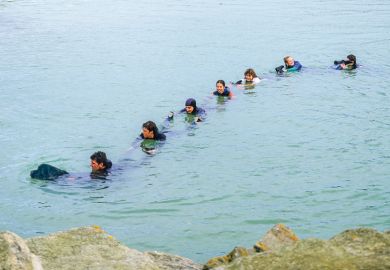China has overtaken the United Arab Emirates as the most common host of international branch campuses and now accounts for 13 per cent of the world’s overseas university outposts, according to a report from the Observatory on Borderless Higher Education (OBHE) and Cross-Border Education Research Team.
The study found that more than a quarter (26 per cent) of the branch campuses that opened between 2011 and 2015 were located in China. The country had 32 branch campuses in 2015, up from 13 at the end of 2010, while the number in the UAE dropped from 32 to 31 during that period, because of closures outpacing new openings.
It added that there are at least seven campuses under development in Asia and four in the Middle East.
The International Branch Campuses: Trends and Developments 2016 report stated that the slowdown in the UAE is a result of “market saturation, changing strategies of local governments, and concern over instability in other parts of the region”.
It added that many of the Chinese ventures are set up with substantial support from the Chinese government, giving “relatively low-risk access to the world’s largest university-aged population”.
Richard Garrett, director of the OBHE, said he expected the shift in growth from the Middle East to Asia to continue, adding that Asia is a “less risky” site for branch campuses “from a geopolitical view” and has much more potential in terms of scale owing to its large youth population.
However, while China has seen rapid growth in these provisions, Mr Garrett said the industry is still “very immature” in many Asian countries. India “still struggles to figure out what it wants from foreign provision”, for example.
The research also found that there has been a growth in the number of branch campuses hosted by developed countries from universities in emerging and developing economies.
Of the 249 international branch campuses across the world, eight constitute “South-to-North” campuses, of which three have been established since 2011.
There are also plans for more campuses of this kind; in September, Amity University in India purchased a Long Island branch of St John’s University for $22 million (£18 million), while Iran’s Islamic Azad University plans to build a branch campus in Canada.
Mr Garrett said he expects these types of campuses to continue to grow, but they will be of a different character and scale to well-established North-to-South partnerships.
He explained that universities from developing countries that are engaged in setting up branch campuses tend to be “unusually large institutions” or “unusually entrepreneurial” and the goal of their foreign provision is to serve a “specialised expat group or specialised minority group that wants some home provision that it cannot get locally” rather than the mainstream population.
Overall, the number of international branch campuses worldwide rose by 26 per cent between 2011 and 2015.
A second part of the report, based on interviews with leaders of 10 well-established international branch campuses around the world, will be published in 2017.
Register to continue
Why register?
- Registration is free and only takes a moment
- Once registered, you can read 3 articles a month
- Sign up for our newsletter
Subscribe
Or subscribe for unlimited access to:
- Unlimited access to news, views, insights & reviews
- Digital editions
- Digital access to THE’s university and college rankings analysis
Already registered or a current subscriber?







